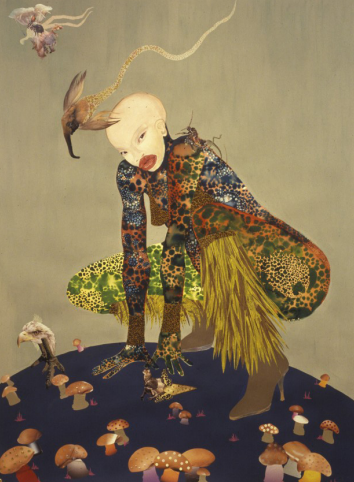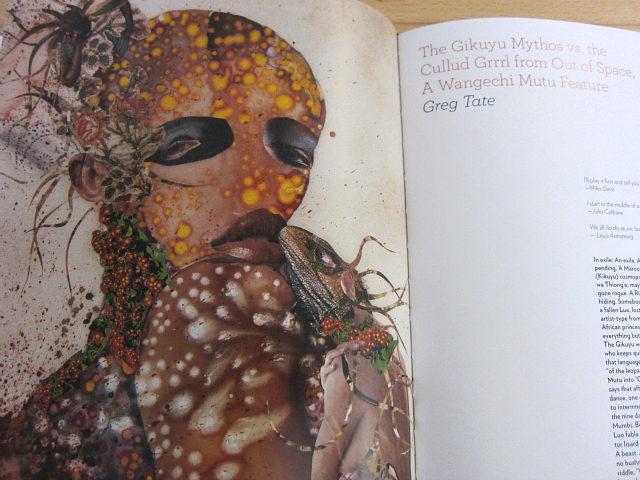Anabelle Vucich – Contextual Document
Script –
I chose the thematic prompt that talked about structure. I thought that this one would help me to explore the most options within the creative exercise. When I thought about how I could incorporate this prompt into my work, I thought about the idea of structure in nature and how man made vs. natural structure can overlap and how this would look aesthetically in the final project.
When we were given the arts practices to choose from, the two that stood out the most to be relating to the final project were spatial interactions and contemporary arts practice. I eventually chose contemporary arts. I chose this practice as it seemed the most widely set practice that I could explore within the confines of the medium and the image-reference.
When I began to think about structure in relation to contemporary arts practice, my first thoughts went straight to the literal. I researched artists who used structural forms
and man-made resources in their art. This was really interesting to see how other people had incorporated the idea of structure into their work in new and unique ways. I looked at the works of Terence Koh and Antony Gormley and how the incorporated structure into really meaningful works and decided that sculpture would be the practice I would use for this project.
When I thought further about the prompt in relation to the practice, I realised that the prompt wasn’t all about structure and form in the solid sense of the word, that the bulk of the prompt talked about the collapse of structure in natural forms. This is when I began to think about using a visual representation of natural forms within my project, combining solid structure with natural forms.
I researched this within the sculptural practice to see how others may have used this idea. I found some works that distorted natural imagery and these interested me a lot. I liked the idea of a sculpture changing the way we view nature and natural imagery and how this can be translated into a contemporary arts context.
These examples of sculpture within a contemporary context relate to the theme because they all explore ideas of the disorder and reorder of structure within the man-made and natural world. My choice of theme became increasingly interesting to me as i researched more about contemporary arts and its relevancy to the prompt.
Sculpture within a contemporary context is a practice that has developed greatly in the past decade, progressing from general sculpture, to in the past few years, a focus on the abstract. Contemporary sculpture began with artists creating forms from found objects, welding metal and scrap materials into art pieces. The practice began to gain popularity in the 1950’s and 60’s and ever since has settled itself as a true contemporary arts practice.
Contemporary sculpture, at it’s root is art that can be perceived from vastly changing viewpoints and angles, creating different three-dimensional meanings for the viewer. This idea creates a formal connection to the prompt as natures structure and form is similar to this idea of changing ideas and perspectives to each individual person.
For my project, once i had decided that contemporary sculpture would be the context of my work, I began to create ideas that revolved around the connection between solid structure and natural forms. I looked at Charles Clary’s work for ideas on how to incorporate structured paper into natural forms and looked at contour maps and how natural land forms behave when placed within the confines of a solid structure.
This quote, I thought, represented how natural and organic form in sculpture has a balance that plays into the thematic prompt’s idea of fluid form in nature. I wanted to, again, subject this idea to a juxtaposition when comparing the fluidity of organic form to solid man-made structure.
The idea of collapsed and unreal structure within contemporary sculpture is not a new one. For years, artists have connected these two ideas to make interesting, eye-catching and confusing sculptures that are hits with the general population of art-viewers and patrons. Pablo Reinoso’s Spaghetti Bench is described as ‘having fulfilled their role as furniture, become once again branches that can grow and climb’. Connecting the idea of structure and its resurgence in nature though art again.
When it came to thinking about how the medium of my project related to the prompt, I thought about how the natural form of a rock or stone can be quite easily represented by paper. The patterns and edges similarly resemble the image of a scrunched up piece of paper and how this repurposing of materials relates to the prompt in that it is a natural thing being shaped and forced into another, collapsing in on itself. This also challenges the idea of solidity and it’s realness or unrealness.
When it comes to a national context, contemporary sculpture in the New Zealand arts is a practice that is steadily growing over time. Recently there has been a resurgence of contemporary sculpture with an exhibition at the Auckland Art Gallery ‘The Obstinate Object: Contemporary New Zealand Sculpture’. Here, new zealand sculptors displayed their work, spilling onto the streets of Auckland City, confirming that contemporary sculpture is a practice celebrated in New Zealand.
These examples explore the prompt formally in the way that their aesthetic characteristics represent the theme of the quote. As I’ve talked about, the visual representation of the connection between natural and unnatural and the collapse of structure in these examples is clear. The way that the quote informs my final design will likely relate more aesthetically rather than conceptually, so the formal aspects of the prompt are more prominent to me at this point.
The way that the conceptual idea of the prompt has come through in the examples is in the ideas that go further into the connection between structured and unstructured forms and how these things can affect perception and belief of what is and what isn’t through visual language.
After consideration of many of the aspects of sculpture in a contemporary arts context, I decided that the idea of nature claiming back man made structure and the collapse of it would be the direction I would like to take my final work. I think that this direction feels the most like my own interpretation of the prompt while still sticking with the main ideas of the prompt. Visually also, i think that this idea will be the most striking and meaningful.
I liked this idea of the natural (the wood) supporting the man-made (the concrete). although this created a different meaning than that of what I decided to go with in the end, the idea of the two working together interested me quite a bit and made for some cool research into the base ideas behind this more conceptual rather than purely visual idea.
This quote shows the true meaning behind contemporary arts practices, that the abstraction and the randomness allows the viewer to feel and analyse those feelings more than say a painting. Contemporary art is not about the idea, its the emotions and experiences connected to it that stick with people throughout their lives.
By researching this practice I was able to determine a context for my work both visually and conceptually. I looked into many different ways of thinking and expressing ideas and was able to settle my project into a specific practice and a specific visual context.
By exploring contemporary art and the practice of contemporary sculpture, I have been able to focus in my idea process and make easier and more natural decisions on the creative direction of this project. This process has helped me to further understand the thematic prompt and how this particular practice fits into the art world and even here in New Zealand specifically. I have found a lot of inspiration in the works I have found that I may never have seen if not for this searching.















